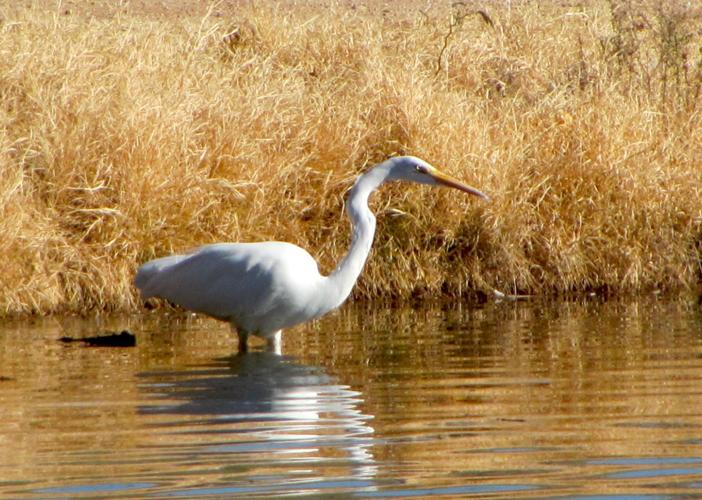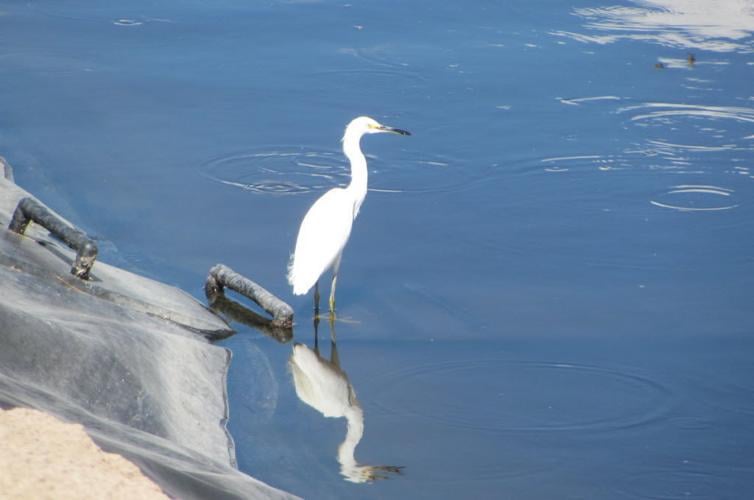Egrets — graceful, long-legged birds with plumage the color of alabaster — add a distinctly exotic element to the diverse winged wildlife of the Tucson valley.
While our deserts and canyons are the favored domain of cactus wrens, quail and other birds, egrets are most often seen on or near lakes and ponds in the area.
“The white egrets we have around here are great egrets, snowy egrets and sometimes cattle egrets,” said Kendall Kroesen, urban program manager with the Tucson Audubon Society. “They’re closely related to the herons we also see here, like great blue heron, green heron and black-crowned night heron.
“They are most often found where there is water, and they eat mostly fish, amphibians and aquatic insects. However, great egrets are sometimes seen in fields, parks or even in the desert. In those locations, they will eat terrestrial insects, rodents and small reptiles.”
Great egrets
Commonly seen in the Tucson area, great egrets are about 37 to 41 inches long and have a 55-inch wingspan, according to the Arizona Game and Fish Department.
An entry by Matt Griffiths on the Tucson Audubon Society website includes these observations:
“Found on every continent except Antarctica, great egrets are in Tucson throughout the year but most likely seen in winter and during migration to and from breeding grounds to the north and in the Midwest. ... Breeding adults develop lime green facial skin and thin, wispy feather plumes used in courtship displays. Called aigrettes, these plumes were prized for women’s hats in the late 19th century, leading to more than 95 percent of this species in North America being killed. A symbol of the resulting conservation effort, the great egret became the logo of the National Audubon Society.”
Best spots in our area to observe the birds
Places in the Tucson area where you might spot egrets include Fort Lowell Park, Sweetwater Wetlands, Reid Park, Columbus Park and Agua Caliente Park.
Those sites “are all good for finding egrets,” Kroesen said. “And really, anywhere there is shallow water along the edge of a pond or along flowing water, there is a possibility of finding them.”





